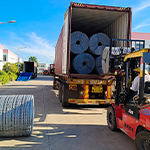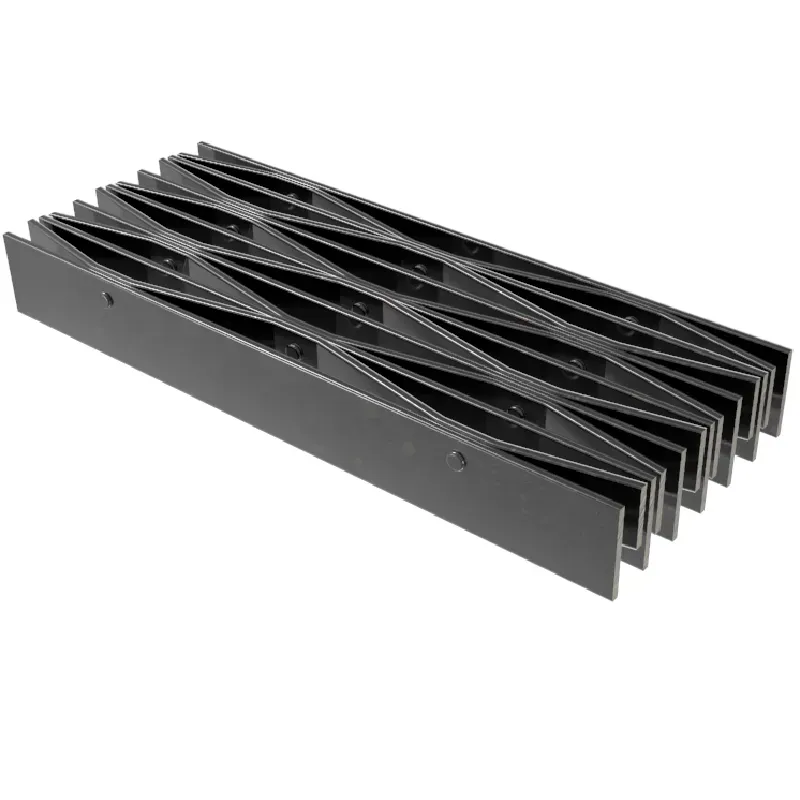- Industrial zone, South of Anping Town, Hengshui, Hebei, China.
- sales@hfpetromesh.com
- +86-18931809706
 Afrikaans
Afrikaans  Albanian
Albanian  Amharic
Amharic  Arabic
Arabic  Armenian
Armenian  Azerbaijani
Azerbaijani  Basque
Basque  Belarusian
Belarusian  Bengali
Bengali  Bosnian
Bosnian  Bulgarian
Bulgarian  Catalan
Catalan  Cebuano
Cebuano  Corsican
Corsican  Croatian
Croatian  Czech
Czech  Danish
Danish  Dutch
Dutch  English
English  Esperanto
Esperanto  Estonian
Estonian  Finnish
Finnish  French
French  Frisian
Frisian  Galician
Galician  Georgian
Georgian  German
German  Greek
Greek  Gujarati
Gujarati  Haitian Creole
Haitian Creole  hausa
hausa  hawaiian
hawaiian  Hebrew
Hebrew  Hindi
Hindi  Miao
Miao  Hungarian
Hungarian  Icelandic
Icelandic  igbo
igbo  Indonesian
Indonesian  irish
irish  Italian
Italian  Japanese
Japanese  Javanese
Javanese  Kannada
Kannada  kazakh
kazakh  Khmer
Khmer  Rwandese
Rwandese  Korean
Korean  Kurdish
Kurdish  Kyrgyz
Kyrgyz  Lao
Lao  Latin
Latin  Latvian
Latvian  Lithuanian
Lithuanian  Luxembourgish
Luxembourgish  Macedonian
Macedonian  Malgashi
Malgashi  Malay
Malay  Malayalam
Malayalam  Maltese
Maltese  Maori
Maori  Marathi
Marathi  Mongolian
Mongolian  Myanmar
Myanmar  Nepali
Nepali  Norwegian
Norwegian  Norwegian
Norwegian  Occitan
Occitan  Pashto
Pashto  Persian
Persian  Polish
Polish  Portuguese
Portuguese  Punjabi
Punjabi  Romanian
Romanian  Russian
Russian  Samoan
Samoan  Scottish Gaelic
Scottish Gaelic  Serbian
Serbian  Sesotho
Sesotho  Shona
Shona  Sindhi
Sindhi  Sinhala
Sinhala  Slovak
Slovak  Slovenian
Slovenian  Somali
Somali  Spanish
Spanish  Sundanese
Sundanese  Swahili
Swahili  Swedish
Swedish  Tagalog
Tagalog  Tajik
Tajik  Tamil
Tamil  Tatar
Tatar  Telugu
Telugu  Thai
Thai  Turkish
Turkish  Turkmen
Turkmen  Ukrainian
Ukrainian  Urdu
Urdu  Uighur
Uighur  Uzbek
Uzbek  Vietnamese
Vietnamese  Welsh
Welsh  Bantu
Bantu  Yiddish
Yiddish  Yoruba
Yoruba  Zulu
Zulu
- Afrikaans
- Albanian
- Amharic
- Arabic
- Armenian
- Azerbaijani
- Basque
- Belarusian
- Bengali
- Bosnian
- Bulgarian
- Catalan
- Cebuano
- Corsican
- Croatian
- Czech
- Danish
- Dutch
- English
- Esperanto
- Estonian
- Finnish
- French
- Frisian
- Galician
- Georgian
- German
- Greek
- Gujarati
- Haitian Creole
- hausa
- hawaiian
- Hebrew
- Hindi
- Miao
- Hungarian
- Icelandic
- igbo
- Indonesian
- irish
- Italian
- Japanese
- Javanese
- Kannada
- kazakh
- Khmer
- Rwandese
- Korean
- Kurdish
- Kyrgyz
- Lao
- Latin
- Latvian
- Lithuanian
- Luxembourgish
- Macedonian
- Malgashi
- Malay
- Malayalam
- Maltese
- Maori
- Marathi
- Mongolian
- Myanmar
- Nepali
- Norwegian
- Norwegian
- Occitan
- Pashto
- Persian
- Polish
- Portuguese
- Punjabi
- Romanian
- Russian
- Samoan
- Scottish Gaelic
- Serbian
- Sesotho
- Shona
- Sindhi
- Sinhala
- Slovak
- Slovenian
- Somali
- Spanish
- Sundanese
- Swahili
- Swedish
- Tagalog
- Tajik
- Tamil
- Tatar
- Telugu
- Thai
- Turkish
- Turkmen
- Ukrainian
- Urdu
- Uighur
- Uzbek
- Vietnamese
- Welsh
- Bantu
- Yiddish
- Yoruba
- Zulu
Feb . 19, 2025 09:04
Back to list
Steel Grating
Platform grating, a vital component in industrial and architectural applications, ensures safety, durability, and functionality. As industries evolve, the significance of using high-quality platform grating becomes more apparent. Through personal experience, professional expertise, authoritative references, and implicitly trustworthy practices, one can discern the unparalleled advantages of platform grating.
In terms of product specifications, it is crucial to consider the type of grating best suited for specific applications. Bar grating remains the most commonly used due to its strength and versatility, available in welded, swaged, or press-locked configurations, each offering unique attributes for different scenarios. Welded bar grating, for instance, provides high strength at an economical cost, making it suitable for floors, walkways, and platforms where heavy loads are frequent. Alternatively, riveted grating offers superior strength for maximum load-bearing requirements, ideal for heavy vehicular traffic areas. A practical evaluation of grating options must include an examination of surface finishes. Galvanized finishes provide a corrosion-resistant layer for steel grating, extending the lifespan significantly in outdoor or moisture-prone environments. Meanwhile, painted or powder-coated options allow for customization in aesthetics without compromising on corrosion resistance, offering an added layer of protection and visual appeal. An effective implementation strategy of platform grating contributes to its success. This involves precise measurements and tailored designs to accommodate specific project needs, with considerations for load requirements, environmental conditions, and integration with existing structures. Collaborating with experienced engineers and installers ensures that platform grating installations meet operational demands effectively and safely. Considering environmental impacts, sustainable practices in material sourcing and manufacturing are increasingly crucial. Choosing suppliers who use recycled materials or have adopted eco-friendly production methodologies contributes positively to sustainability goals without sacrificing quality or durability. The holistic integration of platform grating into infrastructure projects calls for a balanced approach focusing on durability, safety, cost-benefit analysis, and environmental responsibility. With platform grating, every decision—from material selection to installation and maintenance—can significantly influence the success and longevity of its application in industrial and architectural settings. The advanced application of these components not only optimizes functionality and safety but also endorses a paradigm of efficiency and responsibility in modern industrial practices.


In terms of product specifications, it is crucial to consider the type of grating best suited for specific applications. Bar grating remains the most commonly used due to its strength and versatility, available in welded, swaged, or press-locked configurations, each offering unique attributes for different scenarios. Welded bar grating, for instance, provides high strength at an economical cost, making it suitable for floors, walkways, and platforms where heavy loads are frequent. Alternatively, riveted grating offers superior strength for maximum load-bearing requirements, ideal for heavy vehicular traffic areas. A practical evaluation of grating options must include an examination of surface finishes. Galvanized finishes provide a corrosion-resistant layer for steel grating, extending the lifespan significantly in outdoor or moisture-prone environments. Meanwhile, painted or powder-coated options allow for customization in aesthetics without compromising on corrosion resistance, offering an added layer of protection and visual appeal. An effective implementation strategy of platform grating contributes to its success. This involves precise measurements and tailored designs to accommodate specific project needs, with considerations for load requirements, environmental conditions, and integration with existing structures. Collaborating with experienced engineers and installers ensures that platform grating installations meet operational demands effectively and safely. Considering environmental impacts, sustainable practices in material sourcing and manufacturing are increasingly crucial. Choosing suppliers who use recycled materials or have adopted eco-friendly production methodologies contributes positively to sustainability goals without sacrificing quality or durability. The holistic integration of platform grating into infrastructure projects calls for a balanced approach focusing on durability, safety, cost-benefit analysis, and environmental responsibility. With platform grating, every decision—from material selection to installation and maintenance—can significantly influence the success and longevity of its application in industrial and architectural settings. The advanced application of these components not only optimizes functionality and safety but also endorses a paradigm of efficiency and responsibility in modern industrial practices.
Share
Prev:
Next:
Latest news
-
Why Our Shaker Screen for Sale Stands Out in Every ApplicationNewsAug.08,2025
-
Unmatched Efficiency with Premium Shale Shaker Screen TechnologyNewsAug.08,2025
-
Reliable, Durable, and Cost-Effective: Press Locked Steel Grating SolutionsNewsAug.08,2025
-
Precision Strength with Welded Steel Bar GratingNewsAug.08,2025
-
Perimeter Safety Netting: The High-Strength Shield for Elevated Safety SolutionsNewsAug.08,2025
-
Maximize Performance with Steel Walkway GratingNewsAug.08,2025